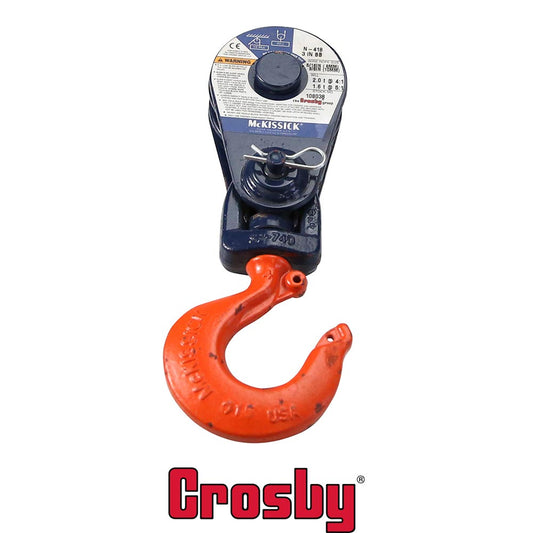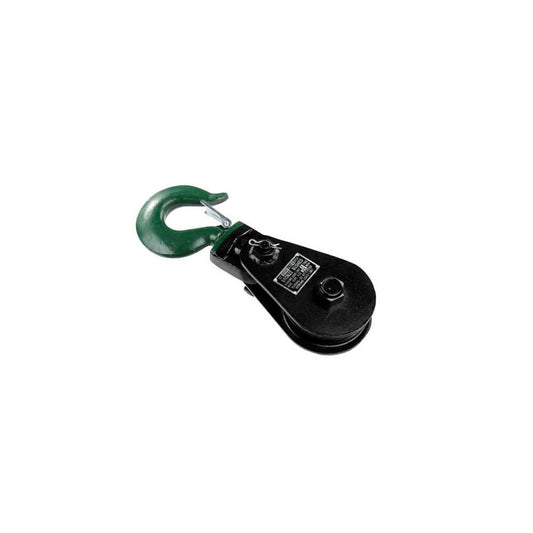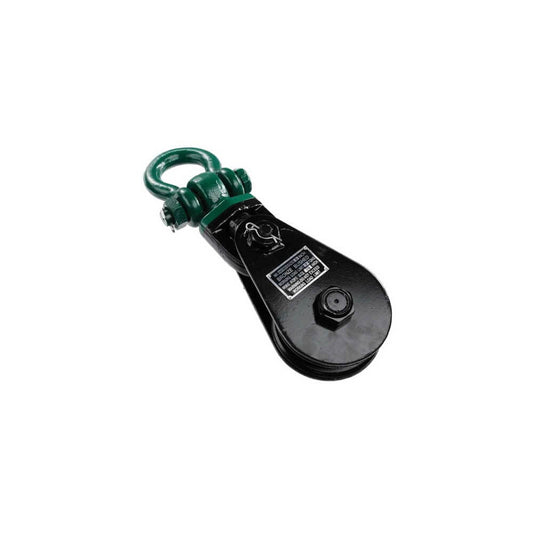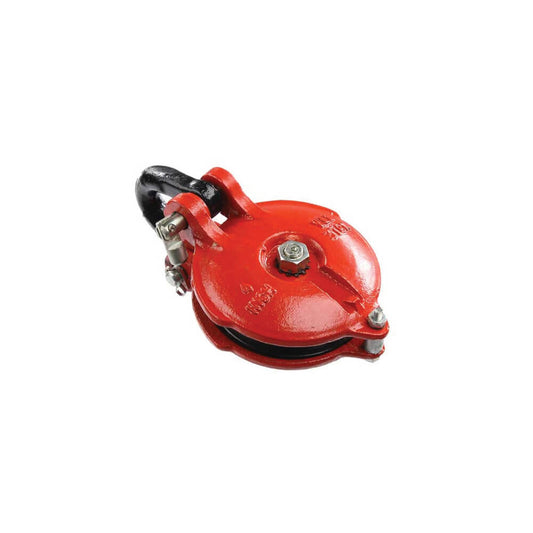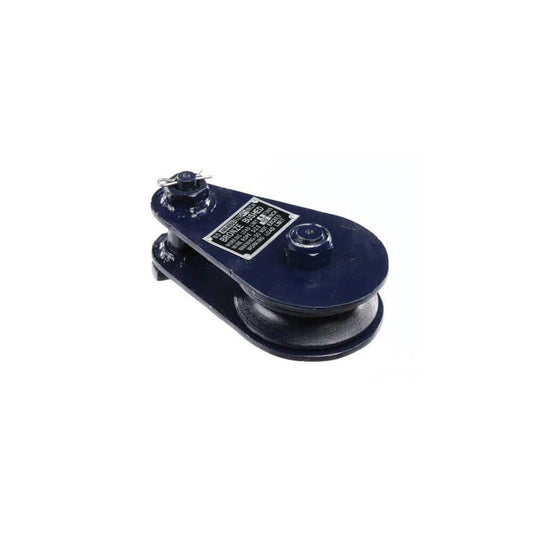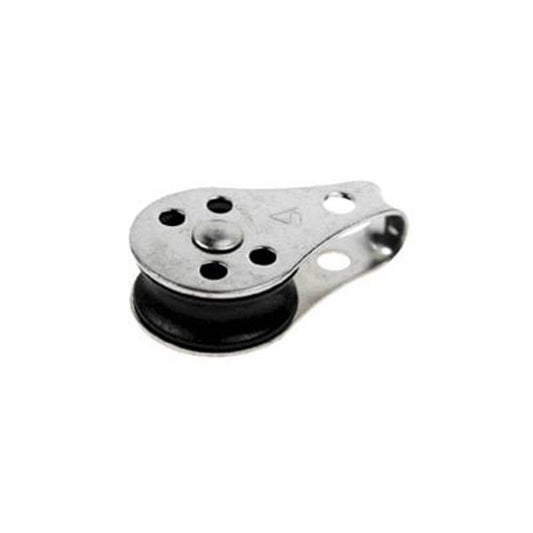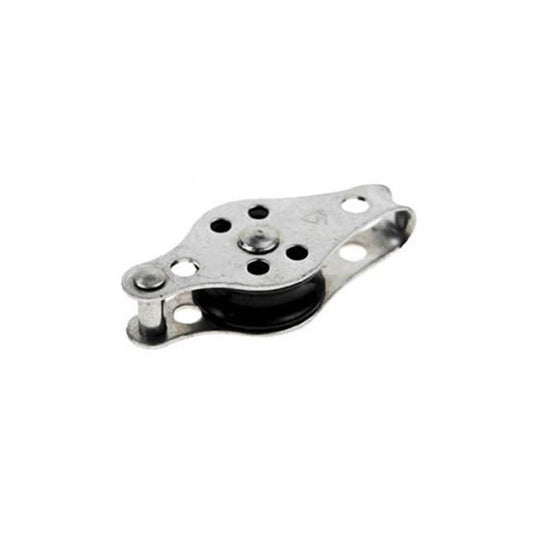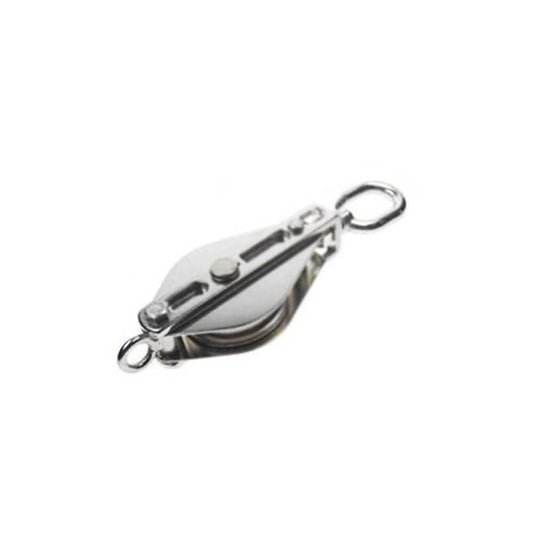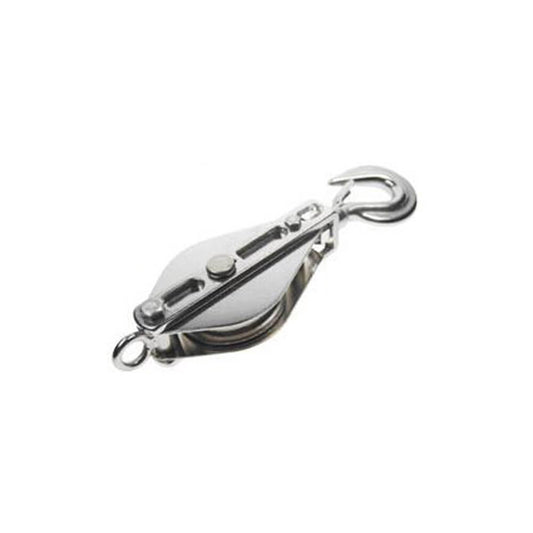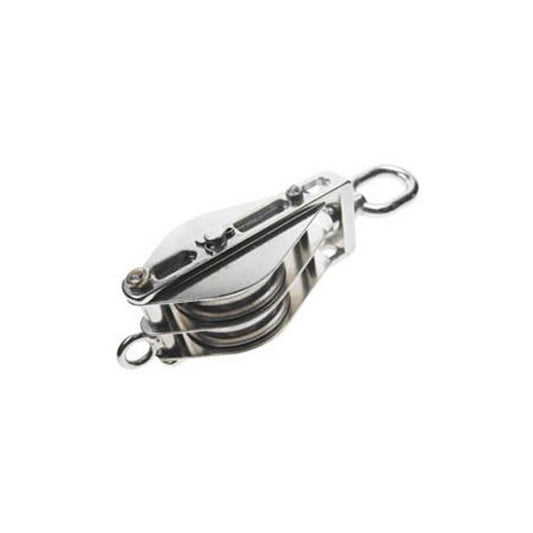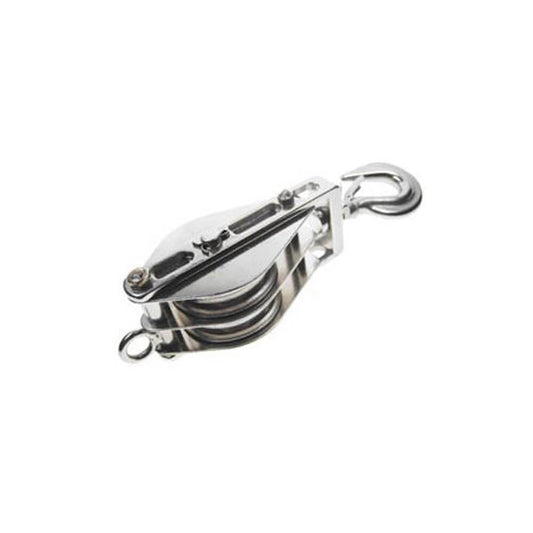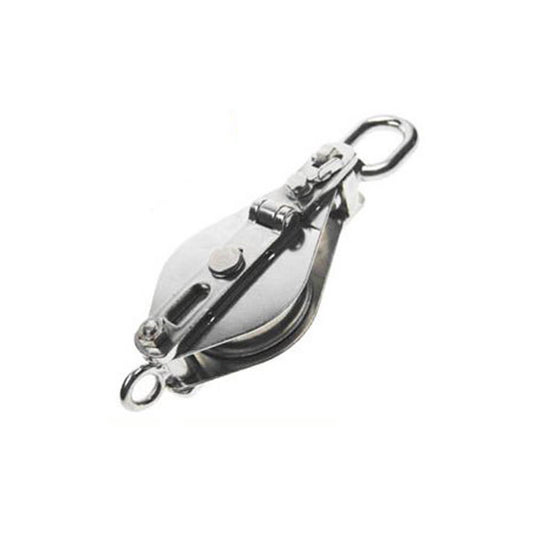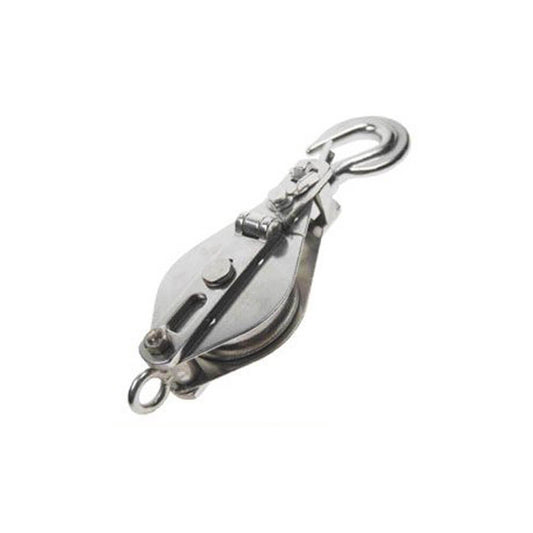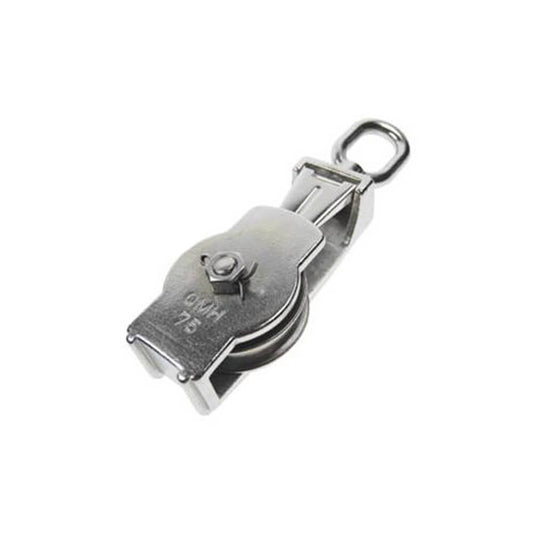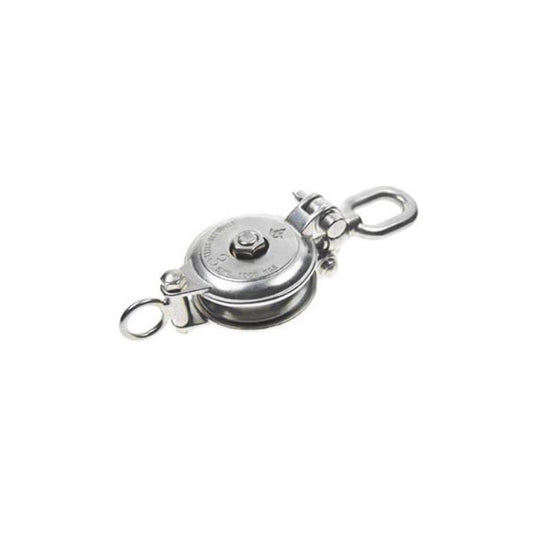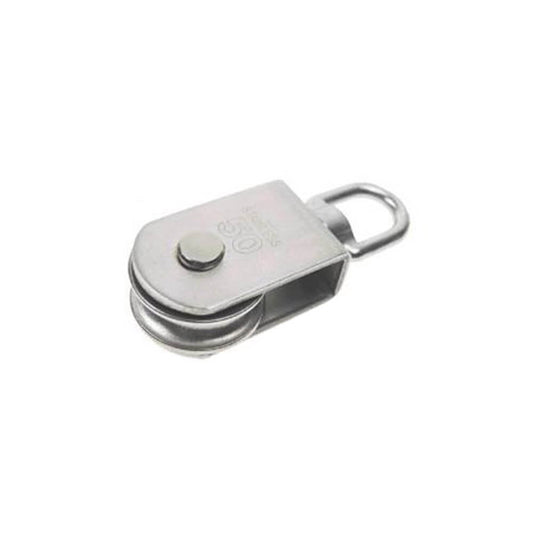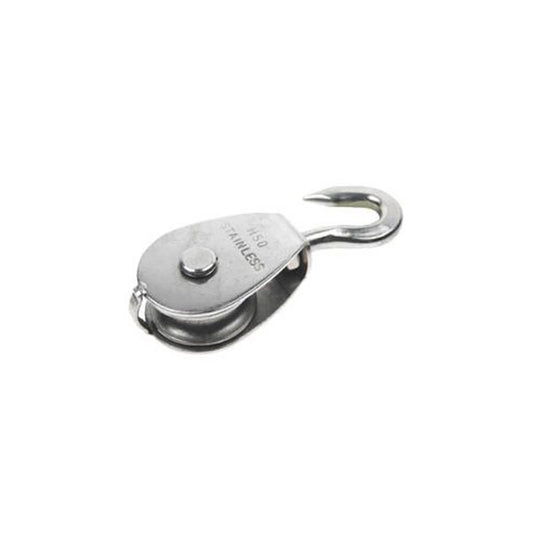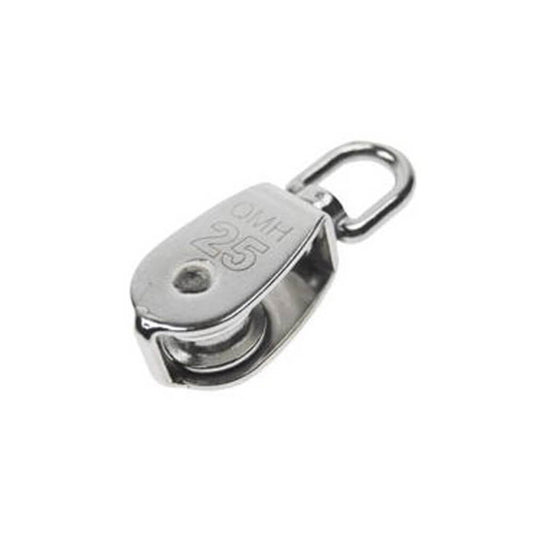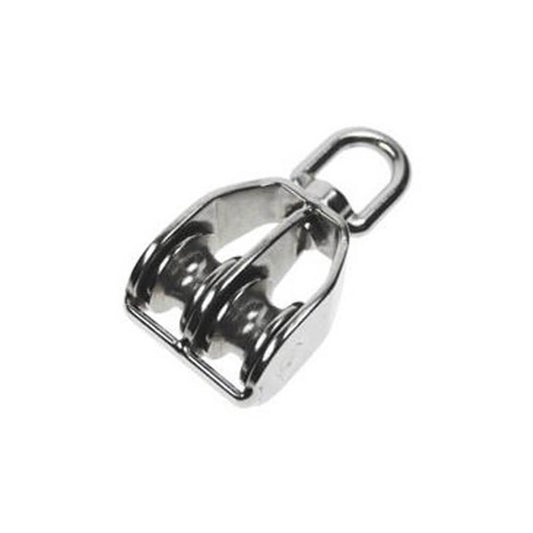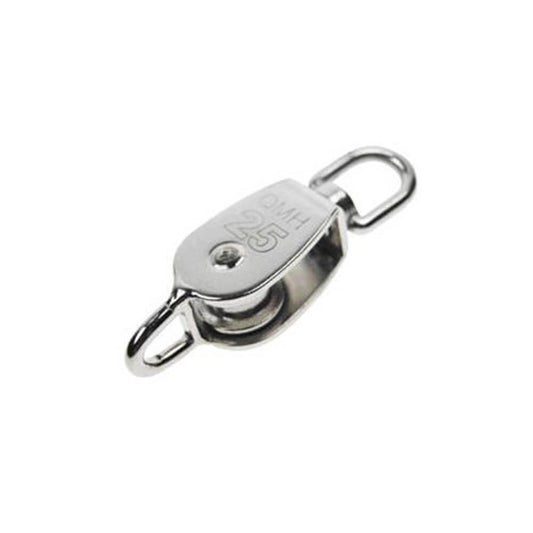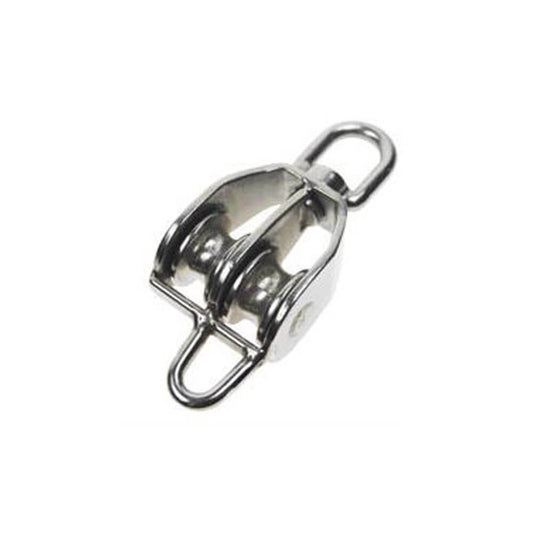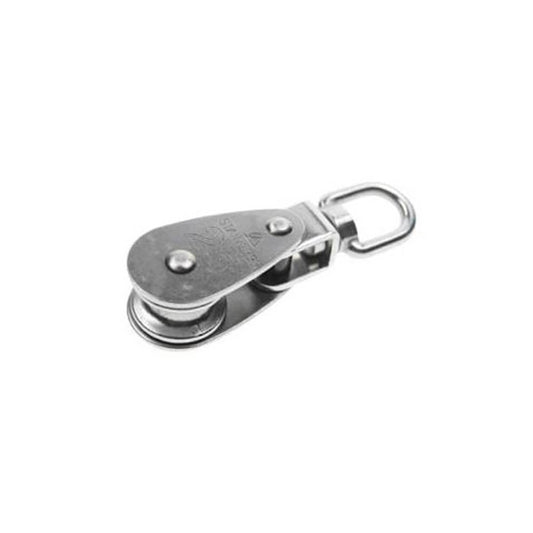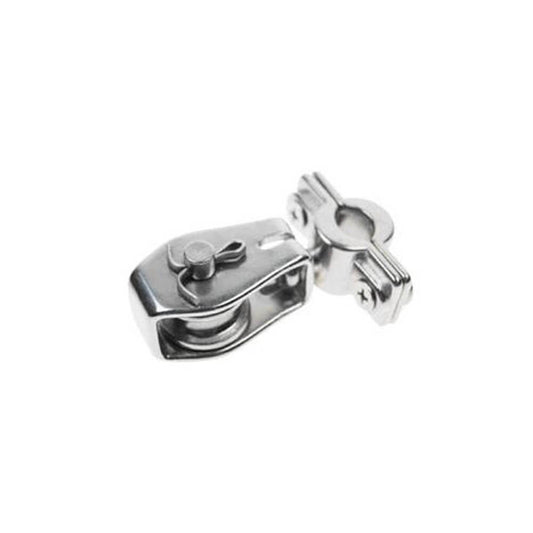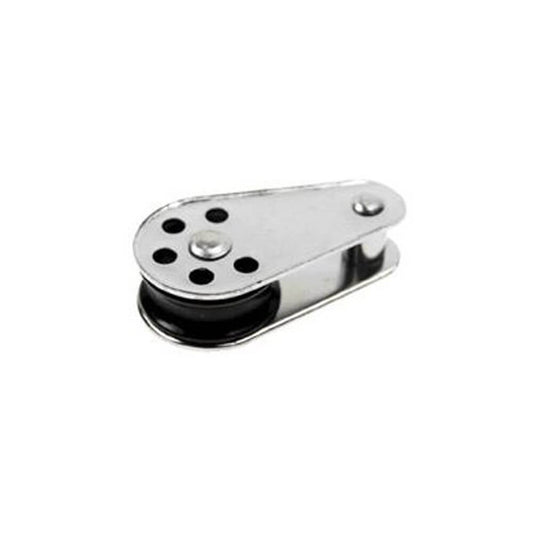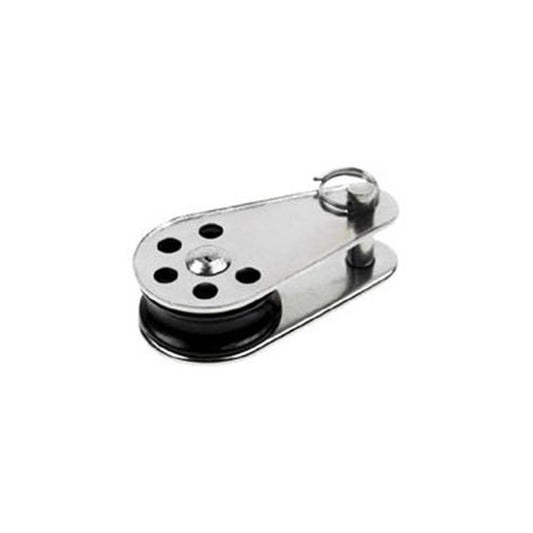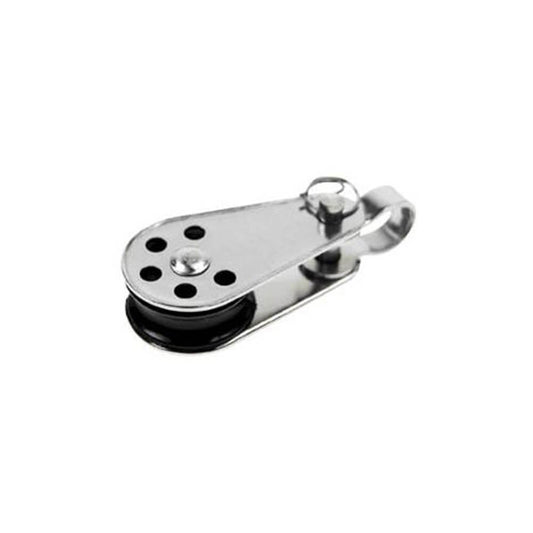Snatch Blocks & Wire Rope Pulleys
Block and Tackle Pulleys and Snatch Blocks
Snatch blocks and wire rope pulleys are common lifting mechanisms used for rigging and lifting applications. These versatile tools reduce the amount of force required to move or lift heavy objects. Their design offsets the anchor point and changes the direction of the rope / line, redistributing the weight of your load.
Commonly utilized in pulley block and tackle systems, snatch blocks or cable pulleys are used in conjunction with wire rope or cables by looping the rope through the pulley (around the sheave) several times before hooking to the load. The force required diminishes proportionately with the amount of pulleys or "loops" used during the hoist.
Snatch & Pulley Block Rigging
For use with everything from sailboats to ATVs, these can be a real workhorse. Also called a rigging block because it contributes to or "snatches" the mechanical force of pull, it offers a unique combination of power and flexibility. When used with a winch, a block lets you pull or lift heavy objects by "breaking" the pull span between the object and the winch. This cuts the direct pull load in half, which doubles the amount of weight your winch can pull.
We offer snatch blocks and pulleys in various designs and sizes, including stainless steel blocks, square blocks, single and double pulleys, swivel blocks, and more, along with the compatible wire rope.
What's the Difference Between a Snatch Block and a Wire Rope Pulley?
While many use "snatch block pulley" to refer to both, this term is actually a combination of two distinct pieces of equipment. The difference is simple: a snatch block comes with a metal plate that is designed to open, allowing for easy threading of your wire rope or cable.
A pulley block, on the other hand, stays closed during the reeving process.
Unless you specifically need a block that opens, these products can generally be used interchangeably, and the option that's right for you usually comes down to user preference.
Choosing a Snatch Block / Cable Pulley Block
With so many different variations, sizes and weight limitations, it's important to know what to look for. There are a variety of factors to keep in mind when choosing a block for your rigging needs:
-
Check the Working Load Limit (WLL) of both the snatch block / wire rope pulley and the wire rope. If the WLL of the block is not compatible with the WLL of the rope, it can create a dangerous situation if either one should fail.
-
Coordinate the size of the sheave in the block to the diameter of the wire rope. If the wire rope is too large for the sheave, the block can crack. Generally, the wire rope-to-sheave size ratio should be 12:1 in order to hold the wire properly while under load.
-
Know your numbers. Because a pulley block can cut the direct pull load in half, choose one that has a rating of double the pull of the winch you'll be using with it.
Heavy Duty Snatch Block Styles
Along with the above factors, the wire rope pulley design is also important. We carry a variety of styles of heavy duty snatch blocks / lifting pulleys, including those with a hook end fitting, a shackle end fitting, and a swivel mechanism. We even offer a selection from Crosby McKissick, one of the most trusted manufacturers in the industry.
How to Use a Snatch Block
Using a snatch block is simple if you follow our directions below. As a reminder, if you have a pulley instead of a snatch block, a pulley does not open and steps 1 and 3 are unnecessary.
1. Open the Sheave's Casing
The first thing you will need to do is open the snatch block casing, which will then give you access to the sheave. Depending on the type of snatch block you have, this step will be slightly different. Some casings are secured with screws, while others are secured with wire pins.
2. Reeving
The next step is called reeving, which is just another term for threading the wire rope around the sheave. You will want to wrap it around the sheave several times to ensure that it will stay in place.
3. Replace the Sheave's Casing
The final step is replacing the metal casing, which can be done by undoing what you did in step one to remove it.
Questions About our Snatch Blocks & Lifting Pulleys?
Choosing the right pulley block and all the equipment to go along with it can be confusing. If you have any questions about using / choosing wire rope blocks, figuring out the necessary working load limits, etc., contact one of our sales specialists. They can help you find just what you need to get the job done safely.
Custom assemblies are also available if a standard wire pulley or snatch block won't meet your needs.
Looking for more rigging equipment and hardware? Browse our selection of wire rope, material handling products, load cells, and more.

